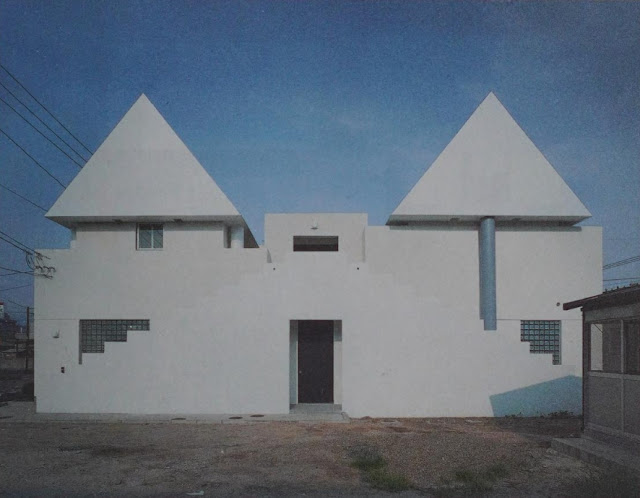Takefumi Aida, Toy Block Houses, 1978-1984
 |
| <2> |
all images and texts
from 'the Japanese House; Architecture and Life after 1945', 2016, pp.77-79


Takefumi Aida, like many of the architects who emerged in the 1970s, developed his architectural thought in reaction to the dominant discourse of Metabolism. In Aida’s case, the introduction of play into the design process provided a tool with which to counteract the technological determinism of modernist architecture. This interest culminated in the Toy Block House series, the first of which was built in Tokyo in 1978. Over thirteen years it came to include nine realized houses, two mass-produced toys, and a dollhouse produced for a competition run by British journal Architectural Design in 1983. Each house appears as if it was formed through the arrangement of basic geometric solids — cylinders, triangular prisms, and cuboids abound — and the autonomy of these elements is emphasized through the use of distinct, bold colours. As the series developed, Aida multiplied the geometric components and introduced illusionistic effects, rendering the formal simplicity of the early houses complex and ultimately positing the dissolution of the system. These apparently childlike compositions undermine modernism’s supposedly rationalist handling of geometry and structure, while stressing the value of individual imagination and whimsy in architectural production. For Aida, in a playful perversion of one of modernism’s central tenets, ‘form follows fiction’.
 |
| <3> |
 |
| <1> |






Comments
Post a Comment